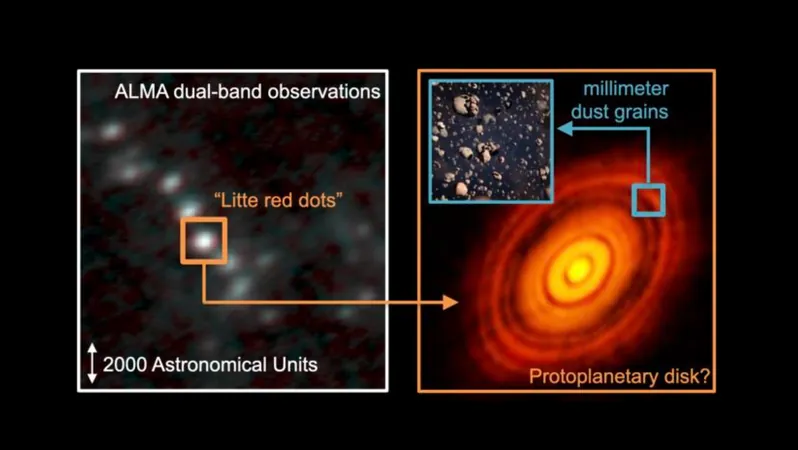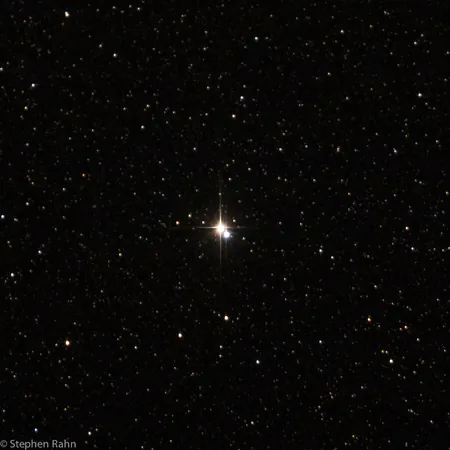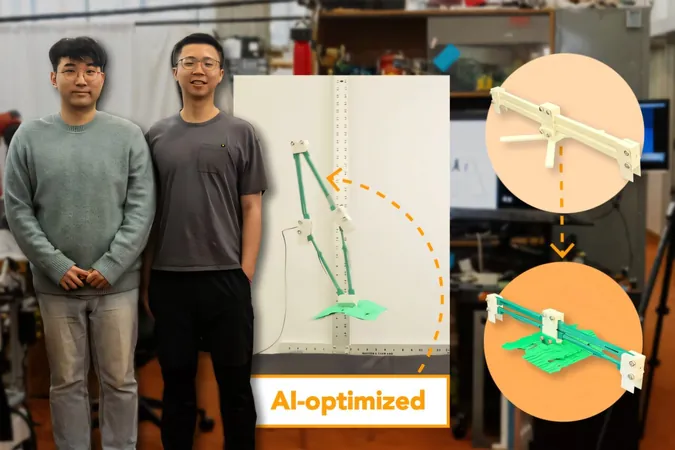
Astronomers Make Groundbreaking Discovery of Protoplanetary Disks in Galactic Center
2025-05-16
Author: Rajesh
A Stunning Revelation from the Heart of the Milky Way
For years, astronomers have unearthed hundreds of protoplanetary disks—crucial structures believed to represent the infancy of solar systems, much like our own. Yet, these findings have largely been confined to nearby areas, leaving a substantial mystery surrounding the chaotic and extreme conditions of the Central Molecular Zone (CMZ) near the Galactic Center.
In this turbulent region, where high pressure and density reign, star and planet formation may unfold in radically different ways. Recent studies of protoplanetary systems in the CMZ provide a thrilling opportunity to test and enhance our understanding of how solar systems form.
A Collaborative Triumph in Cosmic Research
An international team of astronomers from prestigious institutions, including the Kavli Institute for Astronomy and Astrophysics at Peking University, the Shanghai Astronomical Observatory, and the University of Cologne, has executed the most comprehensive survey of three notable molecular clouds within the CMZ.
Publishing their groundbreaking results in the journal *Astronomy & Astrophysics*, the research highlights the identification of over 500 dense cores, the nascent sites of star formation. This wealth of data opens the door to recalibrating our theories on cosmic formation.
Overcoming Cosmic Challenges with Precision Technology
Detecting protoplanetary disks in these dense clouds is no small feat. They are shrouded in thick layers of interstellar dust, making observations extremely challenging. To tackle these obstacles, the researchers harnessed the power of the Atacama Large Millimeter/submillimeter Array (ALMA) in Chile, an advanced telescope renowned for its exceptional angular resolution.
Professor Xing Lu, principal investigator of the ALMA project, explained, 'This technology permits us to identify structures as small as a thousand astronomical units, even from distances that are nearly 17 billion AU away!'
Unveiling Red Dots: A Surprising Discovery
The team made an intriguing observation: more than 70% of the dense cores appeared redder than expected. After ruling out possible biases, the researchers proposed two main theories indicating a widespread presence of protoplanetary disks.
First author Fengwei Xu stated, 'We were astonished to see these 'little red dots' scattered throughout the clouds, revealing the hidden nature of these dense star-forming cores.'
Reevaluating Our Understanding of Cosmic Structures
Significantly, the findings imply that these dense cores might not be uniform spheres, as previously thought. Instead, they might house smaller, denser structures—potentially protoplanetary disks—whose self-absorption at shorter wavelengths leads to the observed reddening.
Another possibility is that dust grains within these cores have enlarged considerably, possibly due to processes occurring in protoplanetary disks. Professor Hauyu Baobab Liu highlighted that while dust grains in the diffuse interstellar medium are typically small, some of these cores may contain sizeable grains that can only emerge in the proximity of forming stars.
The Future of Cosmic Exploration
Regardless of which hypothesis holds true, both scenarios point toward an abundance of protoplanetary disks, with estimates suggesting over 300 of these systems may be forming across the three observed CMZ clouds.
Professor Peter Schilke remarked on the excitement of potentially observing protoplanetary disks in such a unique environment. 'The conditions here are vastly different from our neighborhood, presenting a remarkable opportunity to study planetary formation amidst the extremes of our galaxy.'
Future observations in multiple bands will help further illuminate the physical properties and evolutionary stages of these early cosmic structures, offering a rare glimpse into the chaotic beginnings of planetary systems like our own, even in the most extreme reaches of the Milky Way.




 Brasil (PT)
Brasil (PT)
 Canada (EN)
Canada (EN)
 Chile (ES)
Chile (ES)
 Česko (CS)
Česko (CS)
 대한민국 (KO)
대한민국 (KO)
 España (ES)
España (ES)
 France (FR)
France (FR)
 Hong Kong (EN)
Hong Kong (EN)
 Italia (IT)
Italia (IT)
 日本 (JA)
日本 (JA)
 Magyarország (HU)
Magyarország (HU)
 Norge (NO)
Norge (NO)
 Polska (PL)
Polska (PL)
 Schweiz (DE)
Schweiz (DE)
 Singapore (EN)
Singapore (EN)
 Sverige (SV)
Sverige (SV)
 Suomi (FI)
Suomi (FI)
 Türkiye (TR)
Türkiye (TR)
 الإمارات العربية المتحدة (AR)
الإمارات العربية المتحدة (AR)